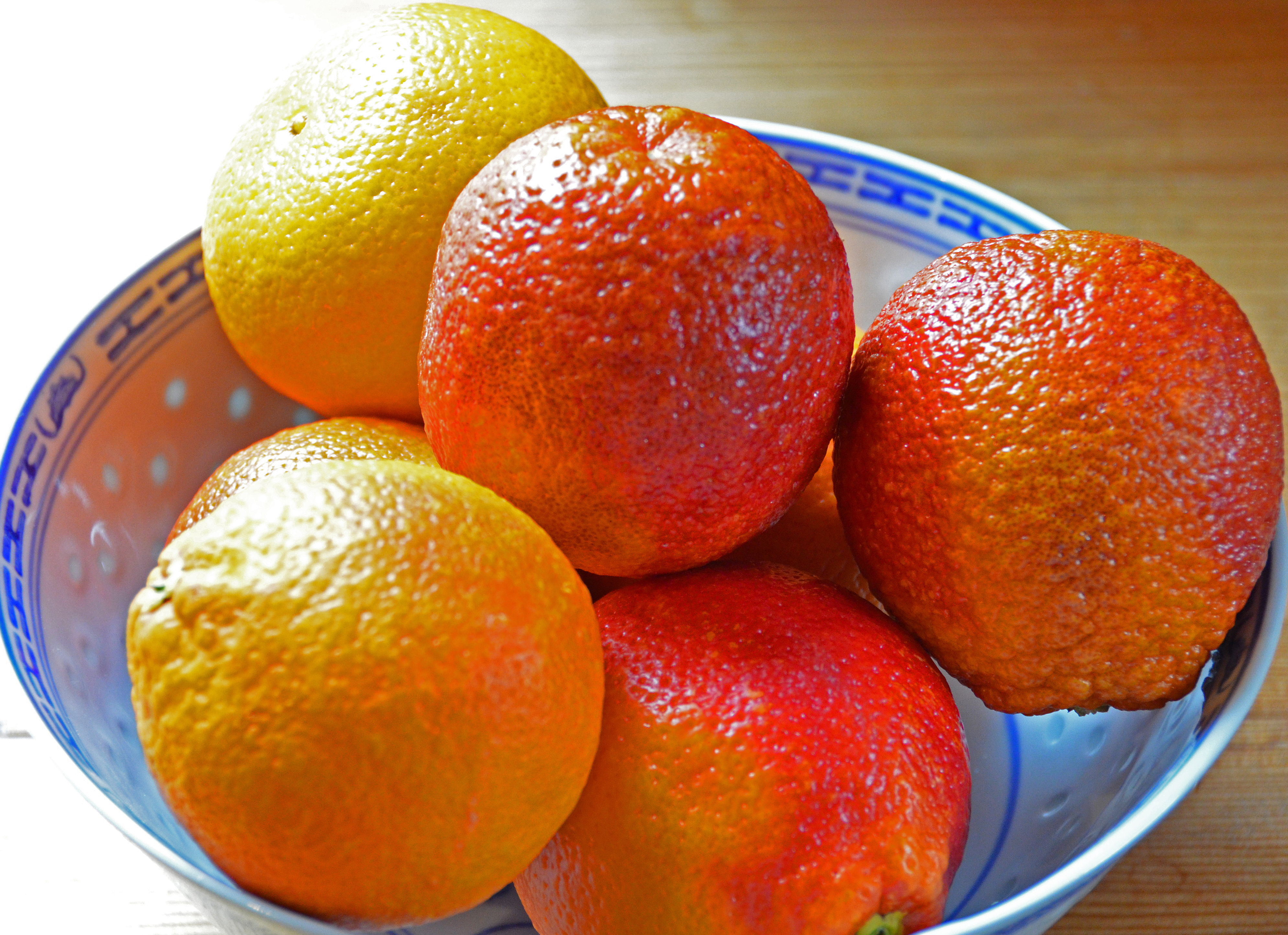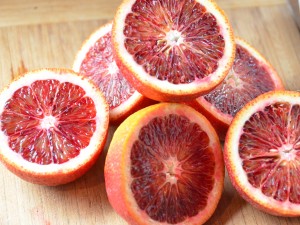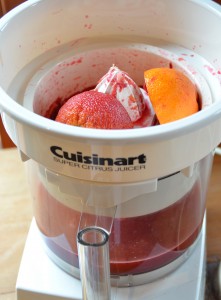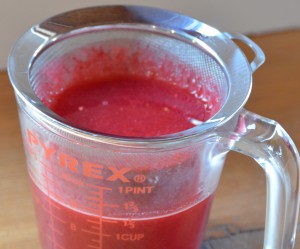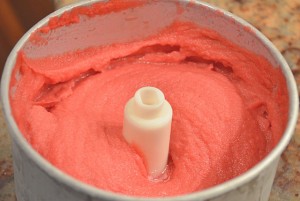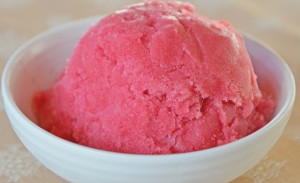Citrus fruit plays a prominent role in the symbolism associated with Chinese New Year. The words for tangerine and orange sound like the words for luck and wealth respectively in Chinese. I like to offer a cooling citrus sorbet as one of my dessert choices after a multi-course dinner. In past years we have enjoyed tangerine and cara-cara oranges and this year I decided on the blood orange. Red is considered to be a lucky color in China, though I would say the color of the blood orange is a cross between crimson and magenta. Blood oranges are a bit smaller than the average orange and the blush of the skin is an indication of the crimson flesh inside. The color is due to a pigment called anthocyanin, an antioxidant not usually found in citrus but in red fruits such as cranberries and cherrries. Blood oranges grown in both Florida and California are available in many markets from December to May and I decided to take advantage of them in the year of the dragon.
Notice the pitted texture and reddish tinge to the skin.
The flesh inside is a surprising contrast the mostly orange skin.
I purchased my Cuisinart juicer many years ago when a client requested fresh-squeezed orange and grapefruit juice for her wedding reception. I don’t use it every day but it does come in handy when breaking down large quantities of citrus.
The recipe I used didn’t require straining, but I prefer to remove the tiny seed bits for a smoother texture.
Blood orange sorbet freshly made from the Il Gelato ice cream maker.
Blood orange sorbet, a refreshing treat after any meal.
Blood Orange Sorbet -recipe adapted from Cooks Illustrated and David Lebovitz
- 6 blood oranges
- 1/4c sugar for 1 cup of juice
- 1T vodka or Grand Marnier
1. Juice the blood oranges and measure the juice. I found that six blood oranges gave me about 1 3/4 cups of juice. Strain juice if a smoother texture is desired.
2. For each cup of juice, use 1/4 cup granulated sugar. For example 3 cups of juice=3/4 cup of sugar.
3. Put the sugar in a small, non-reactive saucepan. Add enough juice to moisten the sugar very well. Heat, stirring frequently, until the sugar is completely dissolved.
4. Stir the sugar back into the reserved blood orange juice. Add about a tablespoon or so of either vodka, Cointreau or Grand Marnier. The addition of a small amount of alcohol will lower the freezing point of water, improving the texture of your final product. Also be certain the mixture is thoroughly chilled before pouring in your ice cream maker. Churn until frozen and transfer the sorbet into a container. Seal and transfer container to freezer for several hours to allow sorbet to firm up.
